Entering the US Wine and Spirits Market
Building the brand
Design before US launch:
- Slogan or Tagline – how the consumer engages
- Point of origin/Terroir
- Brand size and formats
- Expressions proposed
- Volume expectations
- Competitive set
- FOB and Price structures
- Desired shelf pricing
- Manpower deployment
- Marketing plan-investment
- Marketing tools
- Activation in Digital space
- Local or National partners
Considerations:
- What makes our brand unique
- Brand objectives
- Target Audience/Consumer profiles
- Launch strategy
- Programming/Activations/Incentives
- Multicultural or minority engagement
- Reviews and accolades




How To Import Beverage Alcohol Into the U.S
If you own a brand and you’re considering expanding into the U.S. market. Lets share how to import beverage alcohol into the U.S. and some best practices that can be implemented.
Understanding the intricacies of the Beverage Industry

It’s a crowded Category
- The number of craft distilleries has grown from 500 in 2016 to over 2300 today.
- Most craft distillers do not have a strategic plan
- Many suppliers struggle to expand and get traction in North America
- It critical to define you selling Proposition before entering the US
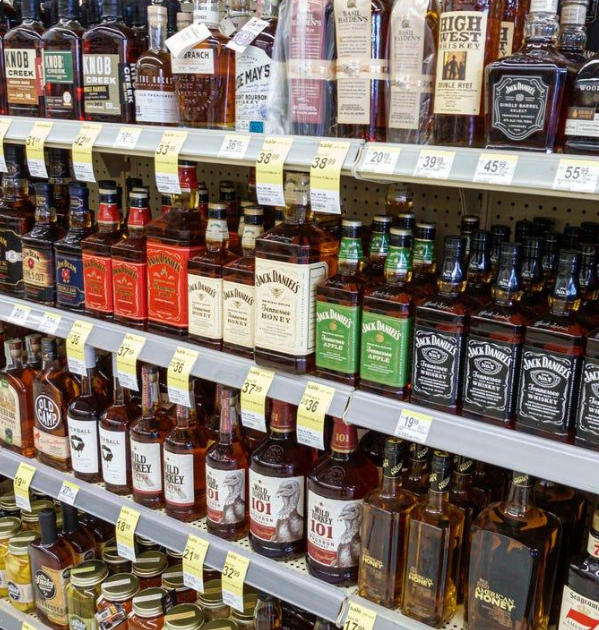
US Alcohol Market Trends
Source Sipsource Q2 2022


Federal Compliance
The first step a brand must take before being able to sell their beverage alcohol in the United States is securing the necessary permits.
A Federal Basic Permit allows a business to profit from the sale of alcohol. For brands looking to import beverage alcohol products into the U.S for distribution, a Federal Basic Import Permit is required.
These permits are obtained through the government agency that oversees alcohol regulation, Alcohol and Tobacco Tax and Trade Bureau (TTB). Typically, an Importer of company like Park Street or MHW can help or a Liquor Lawyer like Ryan Malkin
Formula Approval
The next step would be to find out if your brand’s beverage alcohol product will require a formula approval from the TTB. This step is required when the agency is looking to identify non-traditional methods or ingredients or items not familiar to the existing categories, verify ingredients that meet the FDA’s safety requirements for human consumption, or to better understand the product’s makeup for labeling and tax purposes.
If your product requires formula approval, the TTB will ask for some documents including a complete list of ingredients, a method of manufacture (a description of the steps taken to create the product), and a Flavor Ingredient Data Sheet for any flavors produced by a third-party. The TTB may also ask that a sample of the product be sent for lab analysis. Once the formula is approved, it is valid for 10 years.
Certificate of Label Approval
The TTB requires a Certificate of Label Approval (COLA) for any wine above 7% ABV and spirits or malts above 0.5% ABV. Beverage alcohol labels are regulated by the TTB in order to prohibit the use of misleading statements and to assure that there is adequate information regarding the identity and quality of the product.
It is common for the TTB to request revisions to a label after review, avoid printing labels before receiving your final COLA. Brands must secure a COLA for the labels of each unique product they are aiming to import into the United States.
Important Considerations

State Compliance
Registering in States
Before entering the U.S. market, it’s important to note that each of the 50 states in the U.S. regulates its own alcohol market individually. Generally, there are two types of regulatory frameworks that states use: open or control.
Open states allow private businesses to buy and sell alcohol in accordance with state laws. Regulation is primarily achieved through a licensing system, in which licenses are granted to private enterprises allowing the buying and selling of alcohol at the state’s discretion.
In control states, government agencies often handle the wholesale aspect of the system and then deliver products to privately held off-premise retailers or, in many cases, the state also owns the off-premise retail aspect of the system.
Beyond these two general frameworks, states may have further regulations including fees for registration or required notice of pricing prior to sales taking place. Price posting is intended to eliminate discrimination among customers. It’s important to be aware of a state’s registration fees, registration timelines, and potential price posting deadlines before starting the registration process.
50 States 50 different Policy
- Each State has different regulations and rules
- Similar to the landscape across the EU
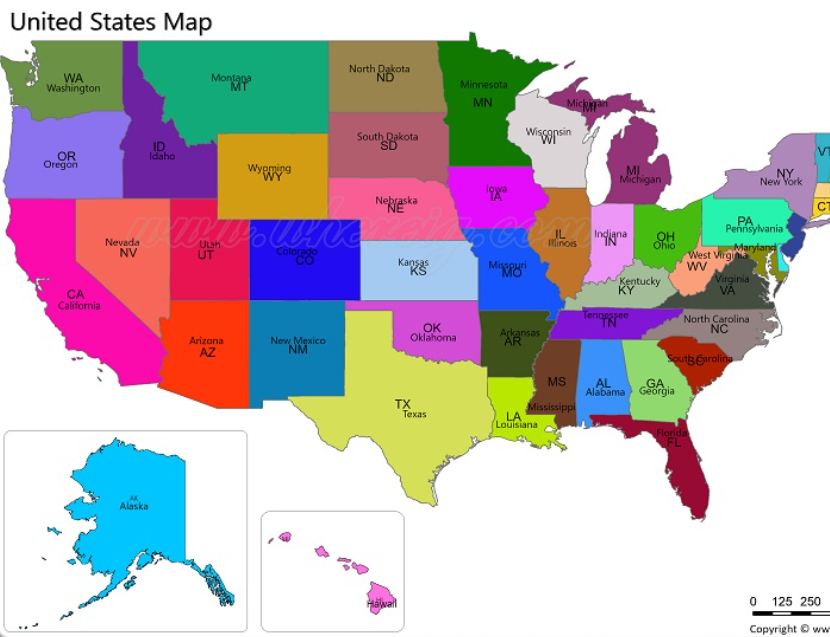
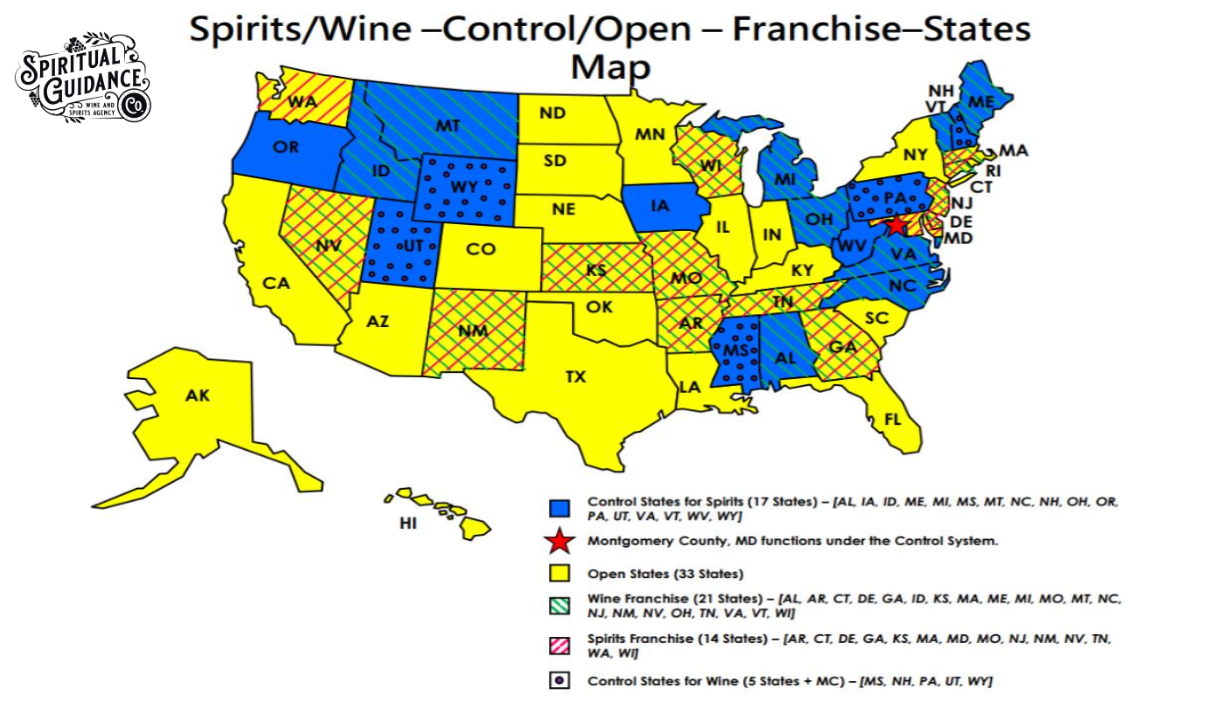
Consider e-Commerce and Direct to consumer
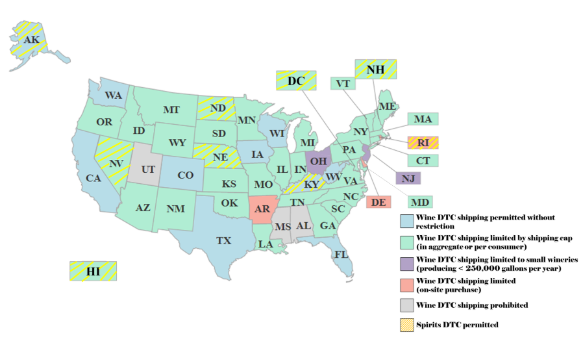
Federal Excise Taxes
All beverage alcohol products that are imported into the U.S. market for sale are subject to federal excise taxes (FET),
Shipping Into The U.S.
It’s important to have a trusted freight forwarder and have everything in order before shipping your brand into the U.S. Be sure to work with your freight forwarding company to arrange shipment all the way to the destination rather than just the port.
Along the way, it’s recommended to keep an open line of communication with the freight team to stay on top of any changes to your shipment’s scheduled arrival. When budgeting, also ensure that you are accounting for potential additional expenses that may come in the form of storage fees, rate increases, or other additional fees.

The Three Tier System
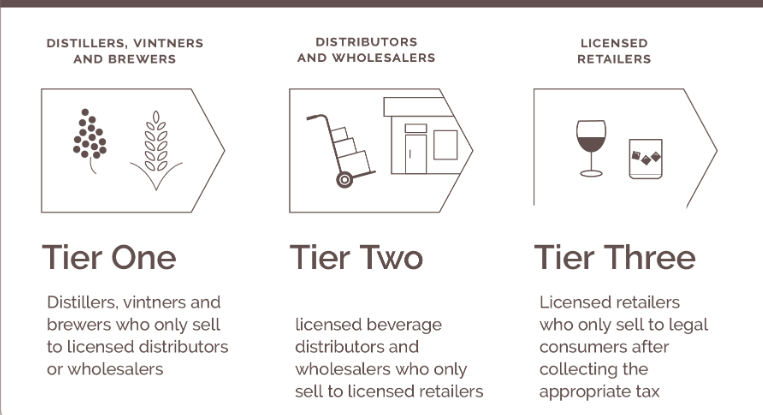
Selecting a Distributor
Most states require beverage alcohol products to go through a distributor. it’s important to select the right distributor. Be sure to research any potential partners before entering a contractual agreement.
The easiest way to learn more about a distribution partner is to ask local customers, review the distributor’s current portfolio, organizational structure, and most importantly try to get an idea of what your target distribution partner is looking for.
Once you’ve signed a distribution agreement, it is also crucial to build relationships with the distributor’s sales representatives. These representatives will be assisting in selling your products to retailers, so it’s important to connect with them and ensure they are engaged with your brand.
Finding the right Fit
- Consider the distributor’s commitment to the success of emerging brands in their portfolio.
- Verify the company’s proficiency in executing field marketing strategies.
- Discover how much regular contact the distribution company keeps with its clients.
- Check the company’s quality standards to make sure they align with your brand’s own standards.
- Make sure the distributor’s merchandising portfolio is competitive against the market.
- Consider the distributor’s payment structure. Will they ask for payment by objective, or performance?
- Inquire about their reporting process. Will they report on your brand’s performance?
- 88K people in the industry
- 8 Billion in Wages
- 3000 location
Pillars for Focus and Accountability at the Distributor Level in the US Market
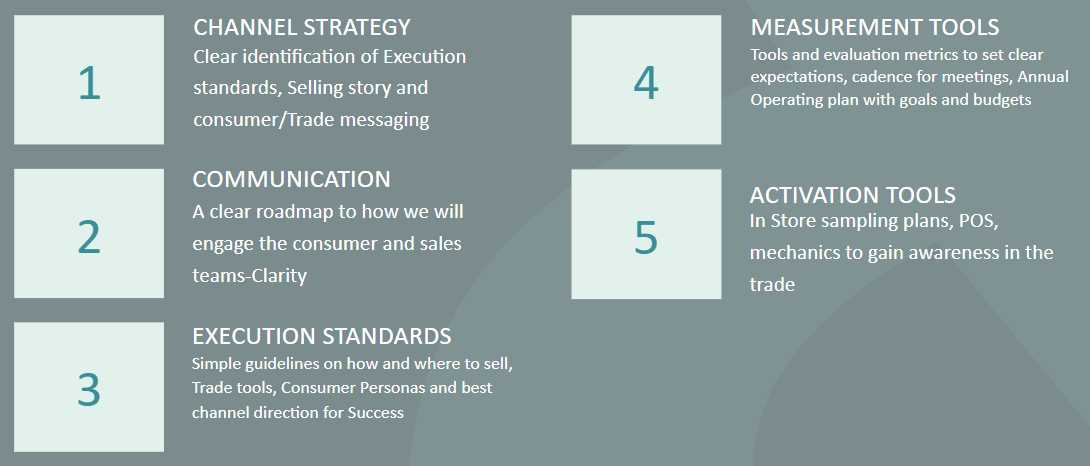
Keys to Success

Know before you go

